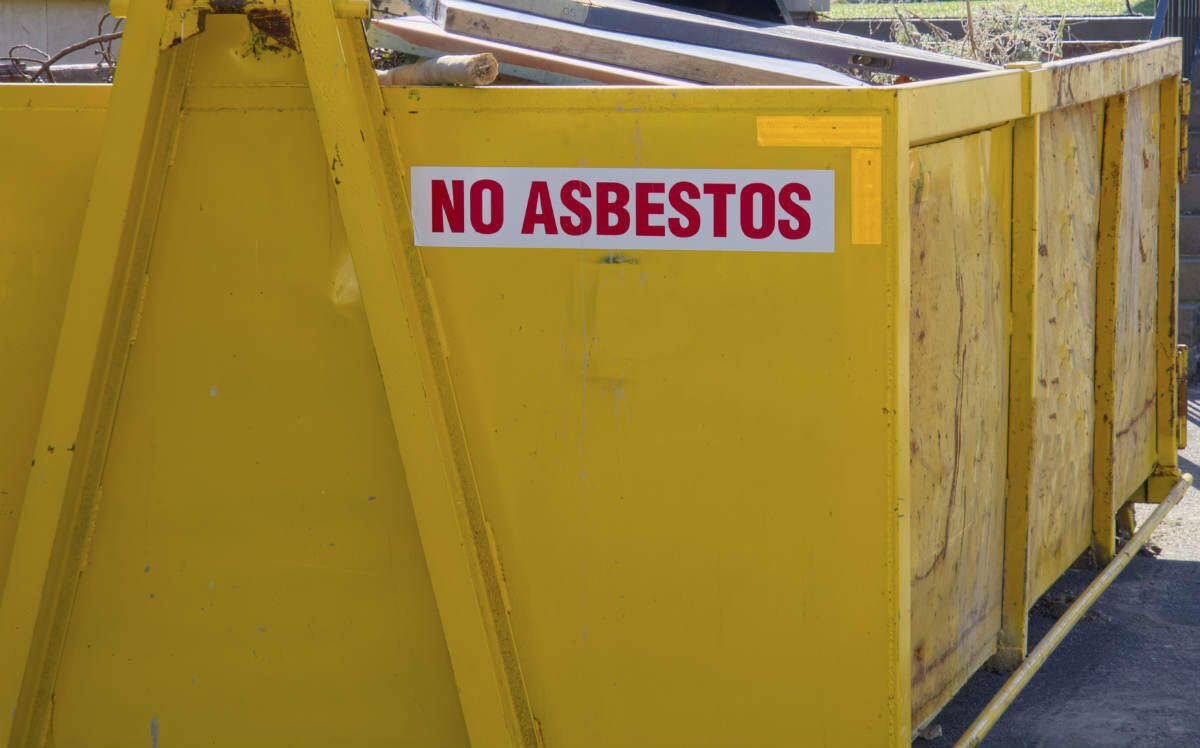Unsafe removal of asbestos by unprotected workers is a huge health and safety risk.

In spite of the fact that asbestos exposure can cause mesothelioma and lung cancer, it has still not been banned. A recent report by the Occupational Safety and Health Administration (OSHA) highlights the dangers of unsafe asbestos removal.
Unsafe Asbestos Removal
Recent investigations have revealed that contractors involved in construction, building, and demolition have been deliberately violating OSHA asbestos abatement procedures and safety standards for removal and disposal of asbestos. The neglect of OSHA standards shows a lack of concern for the serious diseases and health consequences that can result from exposure to asbestos. A number of companies have been found to be violating workplace standards requiring proper handling, storing, and removal of asbestos. Several companies have also been found guilty of violating the Clean Air Act. OSHA violations that were uncovered include:
- Improper disposal procedures of asbestos materials.
- Untrained and unaccredited workers.
- Lack of proper clothing and respirators for workers.
- Unlicensed contractors.
- Improper documentation procedures.
Accredited Asbestos Professionals
There are two types of accredited asbestos professionals that are trained for handling asbestos containing material. These include:
- Asbestos contractors: According to federal law, asbestos contractors that work in commercial buildings should be trained and accredited. However, in some states, the regulation does not apply to home asbestos contractors.
- Asbestos inspectors: Asbestos inspectors can inspect a building or home, assess conditions inside the building, take samples of materials for testing, and advise building occupants about necessary corrections. If the inspector feels that removal or repair of asbestos materials is required, they make sure that the contractor hired for the job follows proper procedures.
Occupations with High Risk of Asbestos Exposure
Workers in the following occupations are at high risk of asbestos exposure:
- building and construction
- railroad
- shipbuilding
- automotive
Workers who are exposed to asbestos are at a greater risk of developing diseases such as mesothelioma, lung cancer, asbestosis, and pleural disease. These occupational diseases are serious and often fatal. Once a worker develops any of these diseases, the consequences are often life-changing.
The risk of asbestos exposure is not limited to workplaces. Family members of workers can be exposed to asbestos by the dust that the worker carries home. Asbestos exposure can also occur in school, public buildings, and homes where asbestos products have become damaged.
Workers’ Compensation for Asbestos Exposure
If you have acquired an occupational illness from asbestos exposure, then chances are that you will require lifetime of treatment and care. Speak to a St. Louis workers’ compensation lawyer. Call The Law Office of James M. Hoffmann at (314) 361-4300 and we will help you get the compensation that you deserve.
Workplace Injury and Accident Causes
Asbestos Exposure
Asbestos Removal
Second Hand Asbestos Exposure
Sexual Assault Workplace
Physical Assault at Workplace
Workplace Injuries Assembly Line
At Fault Accident
Workplace Attack
Benzene Exposure
Injured on Lunch Break
Building Collapse
Workplace Bullying
Chemical Exposure in the Workplace
Chemical Hazards in the Workplace
Cold Stress in the Workplace
Combustible Dust Explosion
Computer Use
Construction Site Accident
Conveyor Belt Accident
On the Job Injury Cause by Coworker
Crane Accident
Injuries from Desk Jobs
Diesel Exhaust Fumes Exposure
Digging Injury
Breaking Company Policy
Drowning at Work
Workplace Drug Use
Electrical Workplace Accidents
Elevator Accident
Equipment Accident
Ergonomics in the Workplace
Excessive Overtime
Workplace Explosion
Extreme Danger
Fall at Work
Fire in the Workplace
Slicer Accident
Forklift Accident
Walk in Freezer
Gas Pipeline Accident
Hard Work
Workplace Hazardous Substances
Hazardous Equipment in the Workplace
Heavy Machinery Accident
Horseplay in the Workplace
Danger at Workplace
Insomnia in the Workplace
Jumping Accident
Ladder Falls at Work
Loading Dock Accident
Machinery Accident Workplace
Equipment Failure Accident
Mining Accident
Mold in the Workplace
Nail Gun Accident
Workplace Noise
Non Collision Accident
Heavy Objects
Workplace Office Equipment
Opioid Use
Injury at Work Due to OSHA Violation
Overexertion Injuries at Work
Use of Pain Killers
Power Tool Injury
Inadequate PPE
Repetitive Motion Injuries in the Workplace
Mansfield Bar
Scaffolding Accident
Secondhand Smoke in the Workplace
Side Effects
Silica Exposure
Sleep Disorder
Slip and Fall Injuries in the Workplace
Stairs at Work
Struck by a Vehicle
Tar Fumes
Toxic Chemical Exposure
Toxic Fumes in the Workplace
Car Accident While Working
Trench Collapse
Trips at Work
Unsafe Working Conditions
Workplace Violence
Welding Injury
Winter Hazards in the Workplace
Working Shifts
